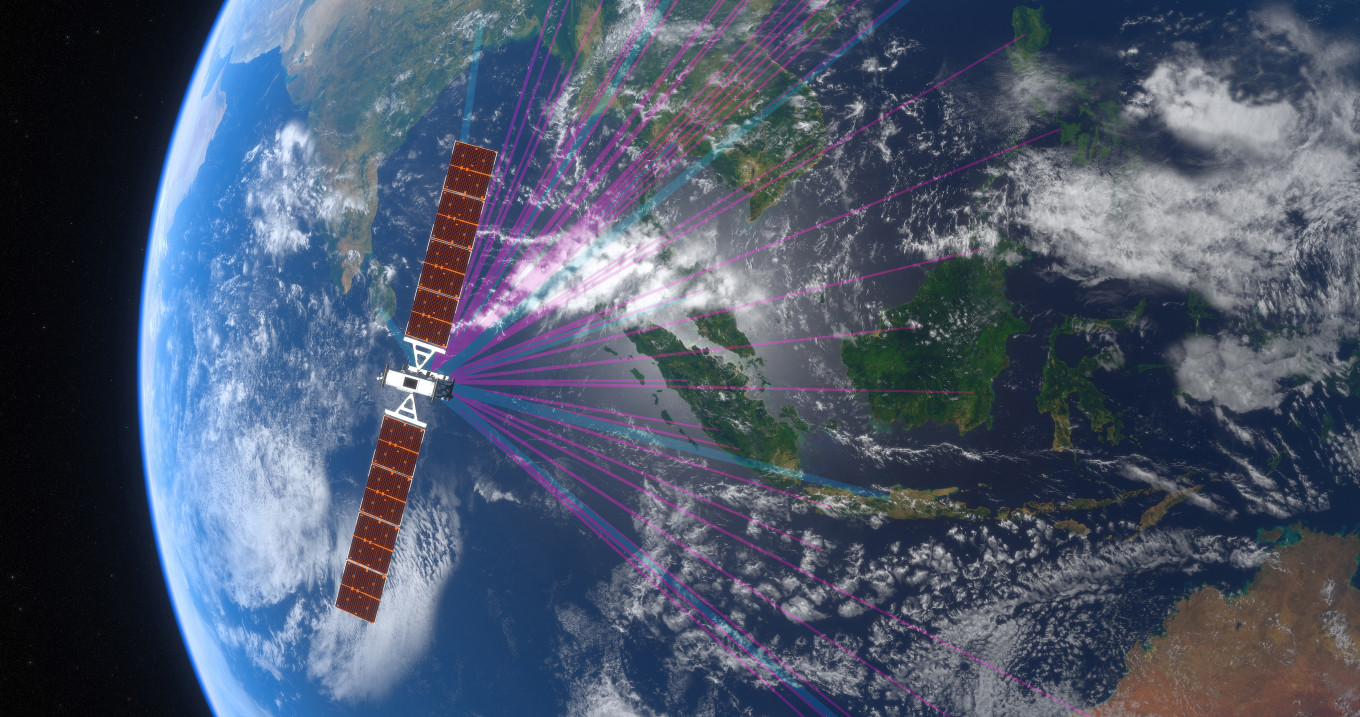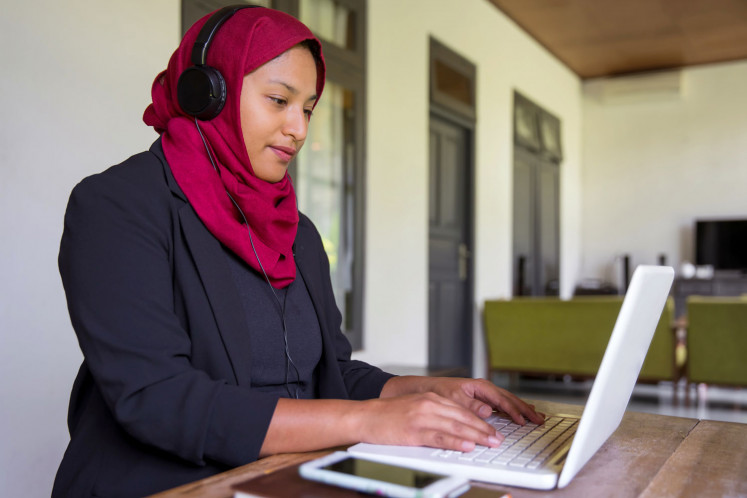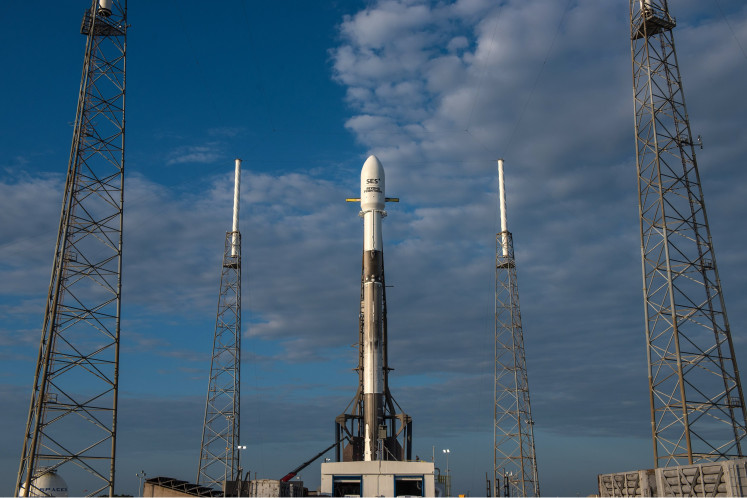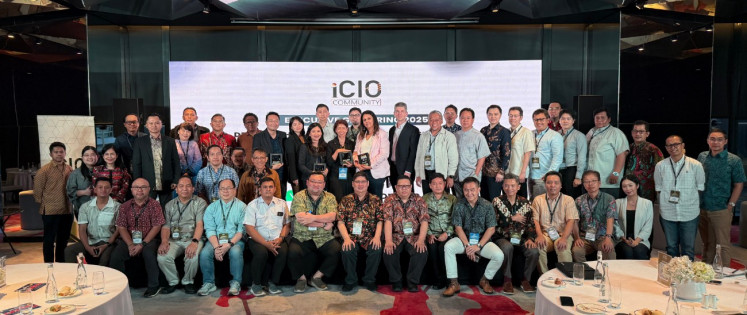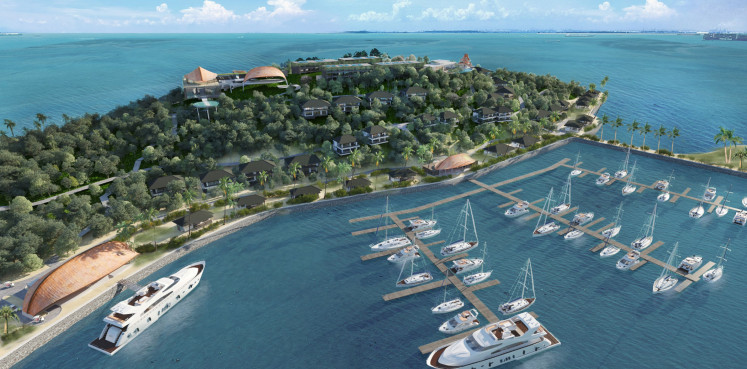Popular Reads
Top Results
Can't find what you're looking for?
View all search resultsPopular Reads
Top Results
Can't find what you're looking for?
View all search resultsSatellite connectivity critical to bridging Indonesia’s digital divide
Amidst lockdowns and travel restrictions around the world this past year, one thing has kept us connected – the internet.
Change text size
Gift Premium Articles
to Anyone
A
midst lockdowns and travel restrictions around the world this past year, one thing has kept us connected – the internet. Digital connectivity has helped businesses remain operational with a remote workforce, has allowed students to continue learning online and made possible conveniences such as food and grocery delivery. Yet the pandemic has also highlighted the vast digital divide in countries like Indonesia, especially between urban populations and those in remote, underserved communities.
Statistics released by the Indonesian Internet Provider’s Association (APJII) show that internet penetration in the country reached 73.7 percent in 2020, a marked improvement against 64.8 percent in 2018. A closer look, though, reveals that the gains have been unevenly distributed across the country. Internet penetration continues to be largely concentrated in urban centres on the main islands of Java and Sumatra, with remote islands, such as Maluku and Papua, lagging behind.
Given the critical importance of digital connectivity during this pandemic and the country’s ambitions to develop its digital economy, the lack of high-speed, low-cost and reliable internet connectivity across Indonesia presents a major hurdle.
Satellites well placed to connect vast Indonesian archipelago
With 17,000 islands making Indonesia the largest archipelago in the world, connecting the country via terrestrial network infrastructure would not only come at a huge economic cost, but might even be a logistical impossibility by virtue of the country’s geography. We need only look up above us, into space, for the solution – satellites. Orbiting the earth thousands of kilometres above us, satellites have the ability to connect virtually any point on earth. Recent satellite technology advancements mean that satellites can now offer a comparable user experience to fibre-optic internet if they are operating closer to Earth at medium earth orbit (MEO) and lower earth orbit (LEO). Satellites today can also carry a lot more bandwidth than before, should they be equipped with high-throughput payloads.
Traditionally, satellite connectivity was synonymous with high cost, high latency, low speed and low capacity. Recent advancements in high-throughput satellite technology, such as those seen in Indonesia’s state-supported Satria satellite and SES’s upcoming O3b mPOWER MEO constellation, allow satellites to now offer a fibre-equivalent user experience if orbiting at the low (<1,000km) or medium earth orbits (MEO <8,000km).
These advancements in satellite technology have led to an improved user experience. Gone are the days of endless buffering due to high latency and low-speed internet. Terabit-level capacity and fibre-equivalent latency on some of these upcoming satellite networks make them well-suited for seamless connections to cloud-enabled applications. This in turn opens up new possibilities for the cloud in industries located in remote areas of Indonesia, such as those in mining, marine and offshore, agriculture, fisheries and so on.
Indonesia is making huge strides to improve the country’s digital infrastructure and realize the true potential of its young populace in an increasingly competitive digital economyIndonesia’s nationwide connectivity journey
Apart from the recently completed Palapa Ring internet superhighway, which succeeded in connecting the archipelago via a 35,000 km network of land and sea cables, the government is also working with satellite industry partners on several satellite-based initiatives.
The BAKTI project, administered by the Communications and Information Ministry, aims to provide satellite-enabled broadband internet and mobile backhaul services to 150,000 sites in remote areas of the country. The first phase of the project, involving local telco Teleglobal and its satellite partner SES, was completed and rolled out successfully in Q3 2019.
To further boost internet speed and access across the country, the government is also looking to launch its largest telecommunications satellite to date, the Satria, in a few years’ time. Upon completion, the high-throughput satellite (HTS) is expected to provide free high-speed internet to 150,000 public facilities across the country, thereby improving connectivity for schools, health facilities and local government offices.
Private sector efforts have also contributed to an ever-expanding constellation of satellites serving the Indonesian market. In 2019, PT Pasifik Satelit Nusantara (PSN) fired up Nusantara Satu, a high-throughput satellite and the country’s first purpose-built, internet-only satellite, to provide broadband access to remote areas of the Indonesian archipelago. Burgeoning demand for high-speed, reliable broadband internet means that we can expect to see more industry players entering the fray to meet this demand.
SES-12, one of the largest geostationary satellites ever procured by SES, today forms part of a vast network of satellites serving the dynamic Asia Pacific regionLooking ahead: Indonesia as regional space powerhouse?
Indonesia is making huge strides to improve the country’s digital infrastructure and realize the true potential of its young populace in an increasingly competitive digital economy. Already, a report by Google, Temasek and Bain predicts the Indonesian digital economy to almost triple from today’s numbers to USD 124 billion by 2025. What is needed to sustain this momentum is continued public-private investment in the sector, a stable political environment to attract foreign investment, and developing a well-qualified pool of local ICT talent.
Satellites will need to be a key component in the country’s network infrastructure, alongside terrestrial mobile networks and undersea cables. This will not only bring connectivity to otherwise out-of-reach areas of the largest archipelago on earth but improve overall network strength and resilience in a disaster-prone and volcanically volatile region. The additional capacity is also needed to meet the country’s fast-growing demand for internet bandwidth.
Apart from being a key component in augmenting the country’s internet infrastructure development, the satellite industry has the potential to be a future growth engine for the Indonesian economy. With the country’s space programme dating back to 1963 when the National Institute of Aeronautics and Space (LAPAN) was set up, Indonesia already possesses the rudimentary structure needed to develop its space industry. Time will tell if this will come to fruition, but with recent plans to develop an equatorial space port in West Papua, as well as the SpaceX team’s recent visit to scout for a rocket launch site, the future looks bright for Indonesia to become Southeast Asia’s next space powerhouse.
Jose del Rosario is Research Director at Northern Sky Research, a satellite and space industry market research agency
